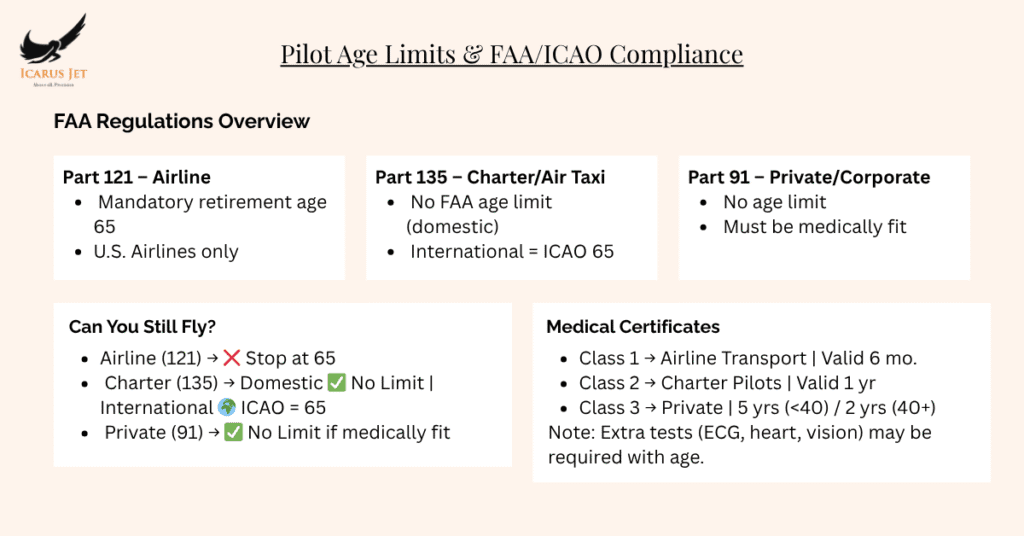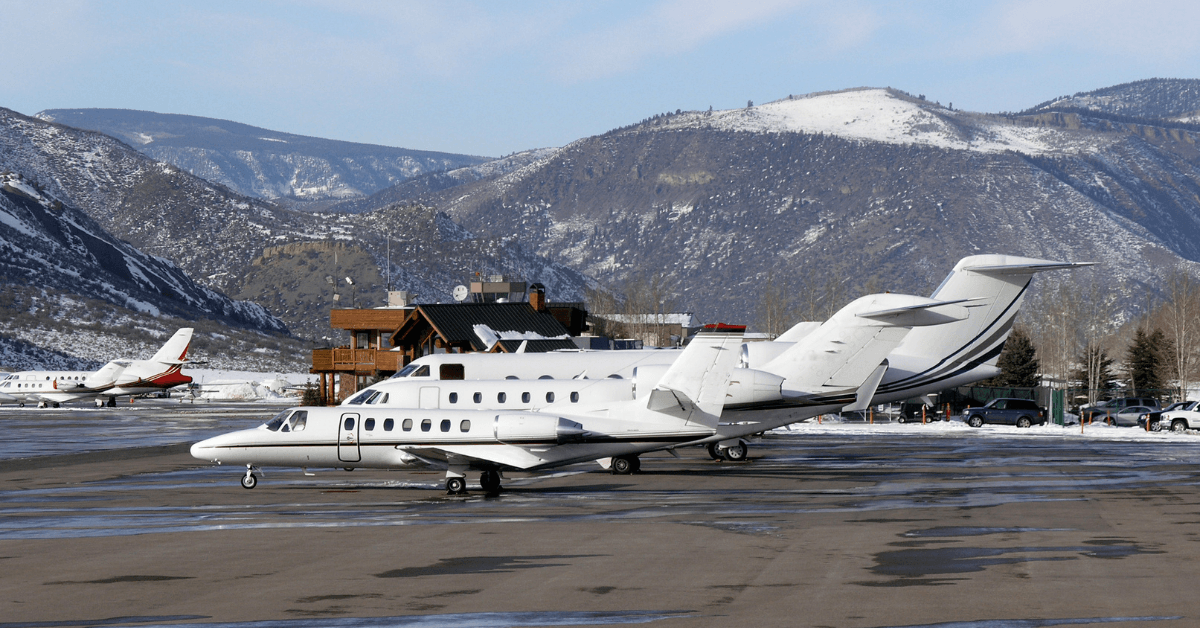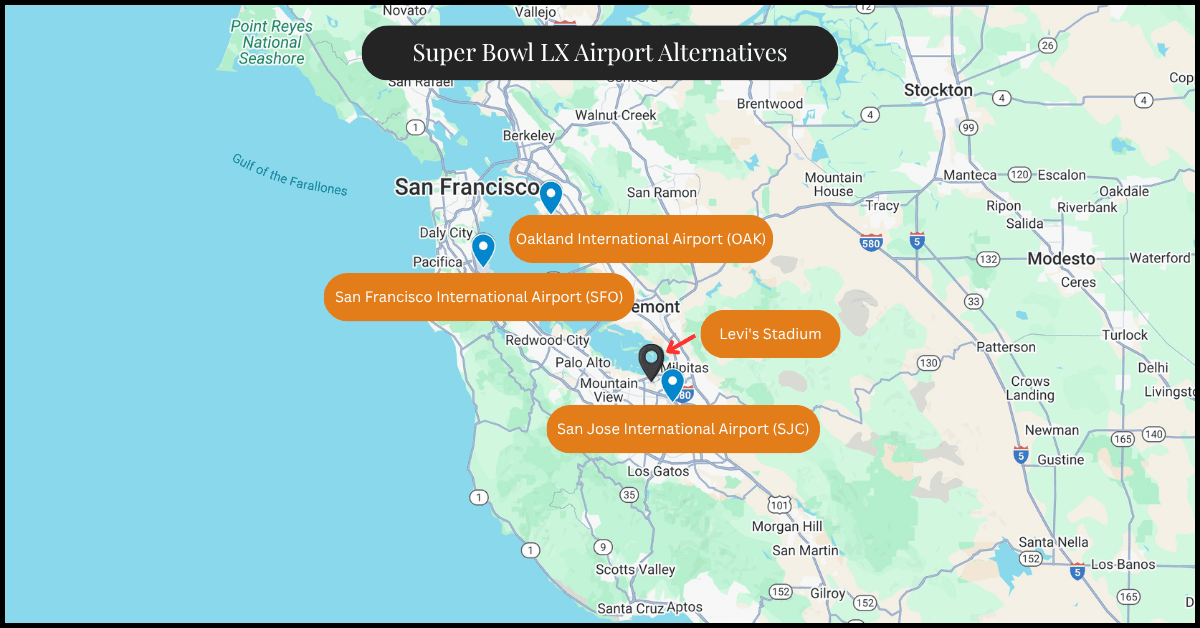Virtually no question within the ranks among private aircraft crew members create more confusion than pilot age limits and crew designation. Whereby commercial flights are governed by rules and regulations, private and charter operations often exist in regulatory grey zones — especially when crossing borders.
Recent events in Europe have highlighted the disparity in how local authorities view age and ID requirements. For U.S. pilots and operators, the developments underscore an important reality: understanding what’s actually required can save hours of delay and potential regulatory friction.
Pilot Age Limit
The aviation framework is commonly misunderstood. The International Civil Aviation Organization (ICAO) sets the age maximum at 65, but that regulation doesn’t apply to private flights, only global commercial flights.
Each nation may establish its own home rules, and though many agree with ICAO standards, many others are permissive or just do not mention it. There is no maximum age limit at all in the world for private flights, with the determining factor being the medical fitness.
When the flight is operated privately (Part 91), pilot age is unlimited provided the medical certificate remains valid. But in the event the flight becomes commercial (Part 135 or similar internationally), and the flight enters internationally, the ICAO regulation kicks in to restrict the pilots in multi-crew operation to age 65.
For overseas-flying crews, it’s preferable to read through each destination country’s AIP (Aeronautical Information Publication), specifically the GEN 1.7 subsection in this case, which describes local crew variations. A few countries refer directly to ICAO. Others modify or complement it.

Regulations in the U.S.: Private, Chartered, and Airline
The Federal Aviation Administration (FAA) mandates three basic categories of operation with some age implications for the crew.
- Part 121 (Airline): The commercial airlines must comply with the FAA mandatory retirement age of 65.
- Part 135 (Charter/Air Taxi): There is no age limit imposed by the FAA for US flights. But internationally the ICAO 65-year limit may be in effect if the flight is considered “commercial.”
- Part 91 (Private/Corporate): There is no age limit. The only limitation is medical fitment, which makes it the most favorable section for experienced pilots.
Technically it would be possible for many U.S. business aircraft pilots to fly safely far beyond age 65 if medically fit and in the private sector.
Proactive Health Management
While rules do not constrain age for civilian pilots, it becomes increasingly essential to be medically fit with age.
FAA’s scheme for medical certificates has three classes:
- Class 1: Required for airline transport flying; six months valid.
- Class 2: Professional pilot standard (including Part 135 charter); valid for one year.
- Class 3: Private pilot standard; remains valid for five years below the age of 40 or two years above the age of 40.
For aging pilots, more tests, like ECGs or cardiac screenings, may become necessary. The certifying power to keep flying then rests with the pilot’s ability to be certified rather than his age.
For operators, this underscores the importance of proactive health management. Scheduling medical early, maintaining fitness standards, and monitoring potential risk factors like hypertension or vision changes can ensure continuity in crew scheduling.
Pilot or Crew?
Yet another perennial issue for the crew of business jets — and particularly for international flights — is the nationality in the identification cards.
Several municipalities and airports started to consider crew badges with “PILOT” instead of “CREW.” This may sound trivial; in a few jurisdictions the difference becomes the determining factor whether or not the pilot is received as qualified flight crew.
For example, in Europe, authorities in most countries now insist that all crew IDs be in English with the term “CREW” and also with the validity period and company designation. IDs that say “PILOT” have at times been challenged or rejected at checkpoints with ensuing delays and the need for more evidence.
For U.S.-based teams flying overseas, the takeaway is straightforward: documents that pass at home may not satisfy local airport staff abroad. European ground handlers, the Middle East ground handlers, and some Asian ground handlers have also cited this difficulty, and it’s the security or customs officer, rather than the aviation authority, who is imposing it.
It’s best to do this in such a manner that all identification includes the word “CREW,” ideally alongside a photo, company name, and expiration date. When in doubt, carry backup identification such as your license and passport.
Preparing for International Operations
When operating a flight that crosses borders, especially out of North America, private jet operators should include compliance checks for both crew age and documentation.
Pre-flight planning should involve:
- Reading the AIP GEN 1.7 page for every airport.
- To ensure the pilot’s medical certificate is in force throughout the flight.
- Verify that all the crew cards contain the appropriate “CREW” designation.
- Notifying local handlers of any crew member aged over 65 on board.
It also prevents embarrassing situations where local authorities doubt the eligibility or competence of some pilots.
Being Proactive in an Evolving Landscape
Private aviation continues to grow globally, sometimes quicker than regulation. That growth ensures variations between local interpretations will continue, especially in relation to identification and pilot competence.
For flight departments, dispatchers, and operations managers, the simplest risk mitigation strategy is early communication and documentation consistency. Keep copies of crew licenses, medicals, and IDs available in both physical and digital form. Ensure your team understands which regulations apply based on operation type and geography.
While flying privately means flexibility, flexibility still depends on precision. For pilots, knowing the details of age restrictions, medical requirements, and identification regulations is how that flexibility remains intact across borders. Partnering with a trip support company like Icarus Jet will enable full compliance and operational readiness for your next international flight.
FAQs
- What is the maximum pilot age for private flights?
There is no maximum age for private operations under Part 91. The only requirement is that the pilot remains medically certified and fit to fly. - Does the ICAO 65-year rule apply to charter flights?
Yes, but only for international commercial operations. It does not apply to private or corporate flights conducted under Part 91. - Can older pilots operate internationally?
Yes, provided they meet medical certification standards and comply with each destination country’s regulations. It’s recommended to verify the AIP GEN 1.7 section for each country before flying. - Why does the term “CREW” matter on ID cards?
Some airports abroad, particularly in Europe, require identification cards to explicitly say “CREW.” Cards marked only “PILOT” may be questioned or delayed at checkpoints. - What should operators do to avoid documentation issues?
Maintain consistent ID formats, verify local rules in advance, and communicate with ground handlers at each destination. Preparing correct documents ahead of time minimizes confusion and ensures uninterrupted operations.




